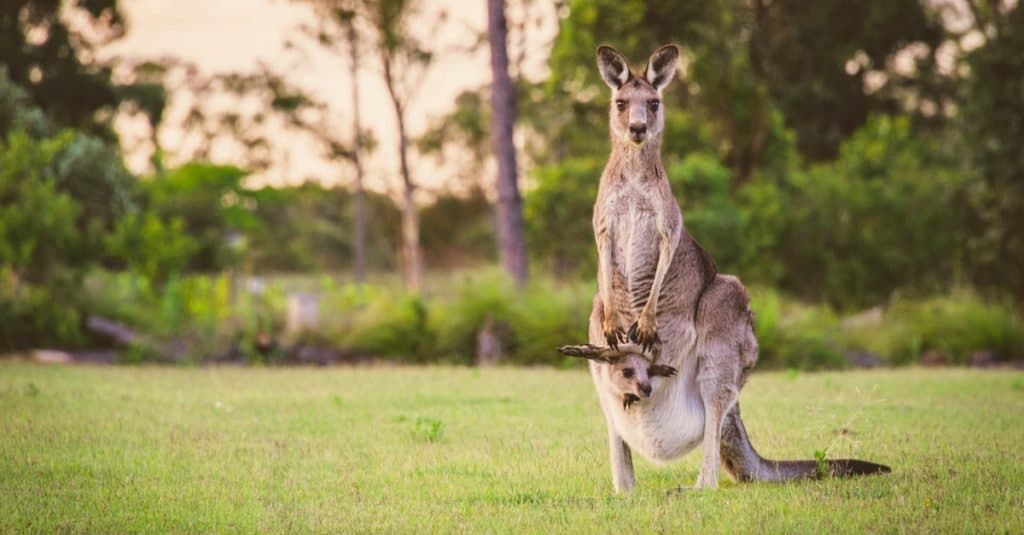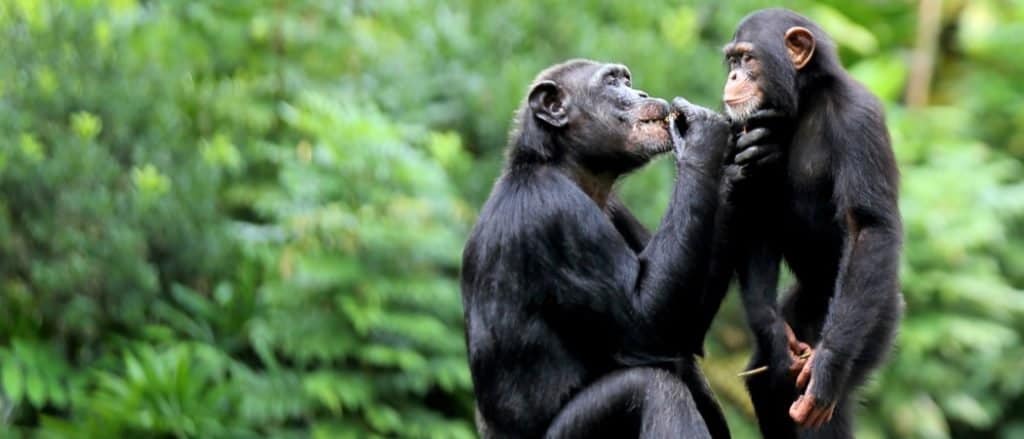Bipedal is defined as an organism that moves on two feet.
Summary
Bipedal means “two feet”, which includes the bipedal movement of animals on two of their feet, including running, hopping, walking, or standing. Bipedalism is used by terrestrial animals such as humans, kangaroos, birds, and primates like chimpanzees. Animals that use bipedalism as locomotion are referred to as bipeds.
A bipedal animal can use their two feet attached to limbs for movement in their environment. Certain animals utilize bipedalism occasionally, whereas some animals are obligated to use bipedal movement like in the case of humans.
Bipedal can also be used to describe the movement of machines on two points.

If a joey is still in the pouch of a pregnant kangaroo, the younger sibling can enter a dormant state called embryonic diapause.
©IntoTheWorld/Shutterstock.com
Bipedal Animals
Examples of bipedal animals include:
- Birds
- Humans
- Primates (chimpanzees, baboons, lemurs, apes)
- Meerkats
- Rabbits
- Bears
- Kangaroos
- Pangolin
- Wallaby
- Frilled dragons
- Quokka
- Springhare
- Jerboa
- Penguins

Meerkats are bipedal creatures, moving about on their two feet.
Types of Bipedalism
The term bipedalism has been labeled separately depending on whether the animal primarily relies on using their two feet for movement, or if it is limited and occasional. This is called either facultative or obligate bipedalism.
Obligate bipedalism is when the animal’s main way of moving around their environment on two feet and quadrupedalism is not preferred. They do not rely on other limbs for movement, although it is possible. While a human’s two feet are the most comfortable way to move around, other limbs can be used for movement too. This is true for humans and other primates who can use their arms or limbs to move on terrestrial land, but it is not practical or ideal in most instances. If the animal relies on their two feet for most of their movement in the environment, they are labeled as an obligate biped.

Chimpanzees are just one type of primate that is bipedal.
©grass-lifeisgood/Shutterstock.com
Facultative bipedalism is used by animals who can move on two feet, although this movement is habitual or limited. Certain lizards will run on their hind legs when running away from predators. Facultative bipedalism can be observed in bears who have the option of walking on all four feet, but also standing on two legs. Animals who can stand on their feet and move, but also use quadrupedalism are labeled as facultative bipeds.
Pronunciation
By-peh-duhl



